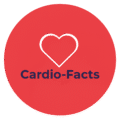Understanding coronary artery disease causes is essential, since CAD (Coronary Artery Disease) is the most common type of heart disease worldwide and a leading cause of death. Millions of people are affected, yet many do not fully understand why it develops. Knowing the main causes and risk factors can help you take steps to protect your heart and live longer, healthier years.
This article will break down the biological mechanisms behind CAD, lifestyle and environmental triggers, and practical prevention strategies — all explained in clear, accessible language.
What Is Coronary Artery Disease?
Coronary artery disease happens when the coronary arteries — the blood vessels that supply the heart muscle — become narrowed or blocked. This is usually due to atherosclerosis, a process where fatty deposits (plaques) build up on the inner walls of arteries.
As plaque grows, it restricts blood flow, reducing oxygen supply to the heart. Sometimes, plaque can rupture, forming a blood clot that completely blocks the artery, causing a heart attack.
Main Biological Causes of CAD
Atherosclerosis – The Root Problem
At the core of CAD is atherosclerosis. When LDL cholesterol particles penetrate the artery wall, they trigger inflammation. Over time, fatty streaks evolve into hardened plaques, narrowing the artery and making it less flexible.
High Blood Pressure (Hypertension)
Constant high pressure damages the artery’s inner lining (endothelium). This injury makes it easier for cholesterol and inflammatory cells to form plaques.
🩺 Measure your blood pressure: keep track at home with an automatic digital monitor 👉 See recommended devices → Best Blood Pressure Monitors 2025: Omron vs iHealth vs Withings (Comparison Guide)
High LDL Cholesterol
LDL (“bad”) cholesterol is strongly linked to CAD. Elevated levels accelerate plaque buildup, while HDL (“good”) cholesterol helps clear LDL from the bloodstream.
Diabetes and Insulin Resistance
High blood sugar damages blood vessels, promoting plaque growth. People with diabetes are two to four times more likely to develop heart disease.
Genetic and Family History Factors
If a parent or sibling developed CAD at an early age, your risk is higher. Genetics may influence cholesterol metabolism, blood pressure regulation, or clotting factors.
Lifestyle and Environmental Triggers
Smoking and Tobacco Exposure
Smoking accelerates atherosclerosis by damaging the arterial lining and lowering oxygen delivery. Even secondhand smoke increases CAD risk.
Unhealthy Diet
A diet rich in trans fats, added sugars, and processed foods promotes high cholesterol and weight gain. In contrast, fruits, vegetables, whole grains, and omega-3-rich fish protect against CAD.
Physical Inactivity
A sedentary lifestyle worsens blood pressure, cholesterol, and weight control. Exercise strengthens the heart muscle and improves circulation.
Obesity and Overweight
Excess weight is strongly associated with high blood pressure, diabetes, and high cholesterol — all key CAD causes.
Stress and Mental Health
Chronic stress, poor sleep, and depression are linked to hormonal imbalances, inflammation, and unhealthy coping habits like smoking or overeating.
💡 See also: Stress Management for Heart Health Over 40: Proven Strategies to Protect Your Heart
How Multiple Factors Interact
It’s rare for CAD to result from a single cause. Instead, risk factors add up:
- A smoker with high LDL cholesterol and diabetes has a much higher chance of CAD than someone with just one of these conditions.
- Age and gender also play a role: men develop CAD earlier, while women’s risk rises sharply after menopause.
This makes prevention even more important — addressing one risk factor can lower the overall burden significantly.
Prevention: What You Can Do Today
While some causes like genetics cannot be changed, most CAD risk factors are preventable.
- Quit smoking – even after years of smoking, quitting reduces risk rapidly.
- Adopt a heart-healthy diet – focus on vegetables, whole grains, lean protein, and healthy fats.
- Exercise regularly – at least 150 minutes of moderate-intensity activity per week.
- Control blood pressure, cholesterol, and diabetes – through lifestyle changes and medication if prescribed.
- Manage stress and sleep – prioritize relaxation techniques and 7–9 hours of sleep nightly.
- Schedule regular check-ups – early detection and treatment save lives.
💡 See also: Exercise for Heart Health: How Much Do You Really Need?
Key Takeaways
- Coronary artery disease is primarily caused by atherosclerosis — plaque buildup in the arteries.
- Major biological causes: high blood pressure, high LDL cholesterol, diabetes, genetics.
- Major lifestyle triggers: smoking, poor diet, inactivity, obesity, and chronic stress.
- Prevention is possible: lifestyle choices, medical care, and awareness make a huge difference.
By understanding the causes of CAD, you are already taking the first step toward a healthier heart.
FAQ
What is the number one cause of coronary artery disease?
Atherosclerosis, or plaque buildup in the arteries, is the primary cause.
Can stress alone cause coronary artery disease?
Stress may not directly cause CAD, but chronic stress increases risk by raising blood pressure and promoting unhealthy habits.
Can coronary artery disease be reversed?
In some cases, aggressive lifestyle changes and medications can slow or even partially reverse plaque buildup, but prevention remains the best strategy.
References
- Centers for Disease Control and Prevention (CDC) – Coronary Artery Disease
- American Heart Association – Atherosclerosis
- Mayo Clinic – Coronary Artery Disease: Causes
- CDC – Diabetes and Heart Disease
- British Heart Foundation – Family History of Heart Disease
- American Heart Association – Physical Activity and Heart Health
- World Health Organization – Obesity and Overweight
- European Society of Cardiology – CVD Prevention Toolbox
⚠️ Disclaimer: The content on Cardio-Facts is for informational and educational purposes only and does not constitute medical advice. Always consult a qualified healthcare professional regarding your health. Read our full disclaimer and legal policies.
